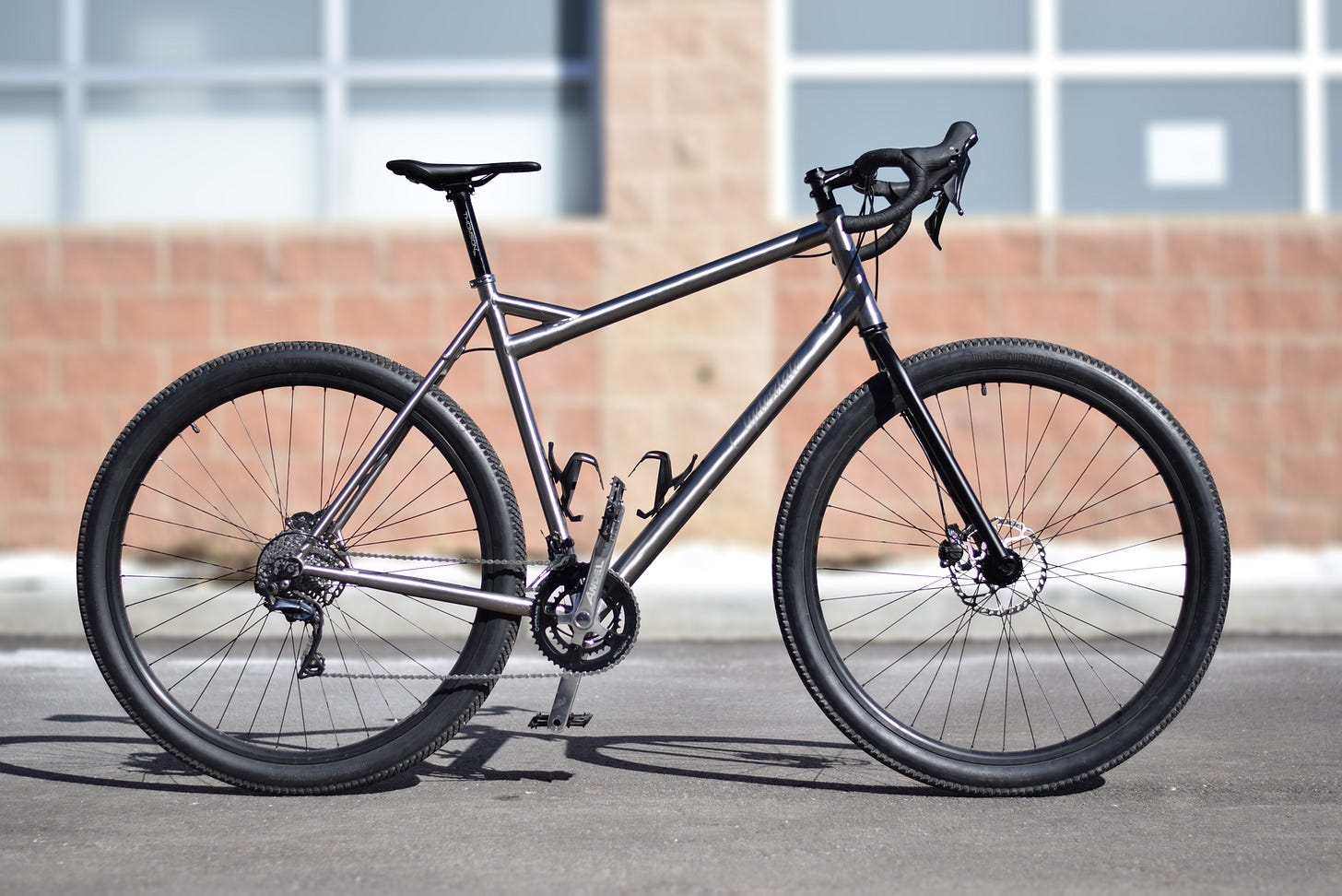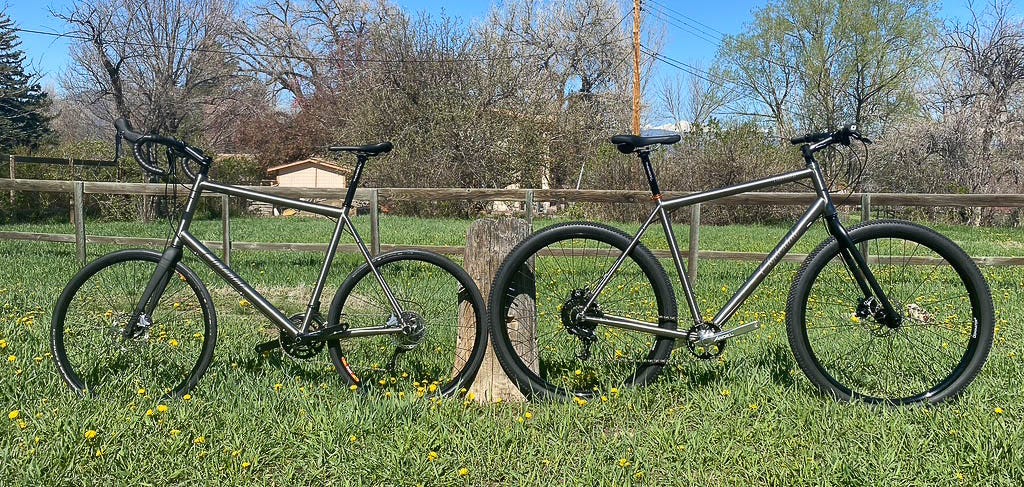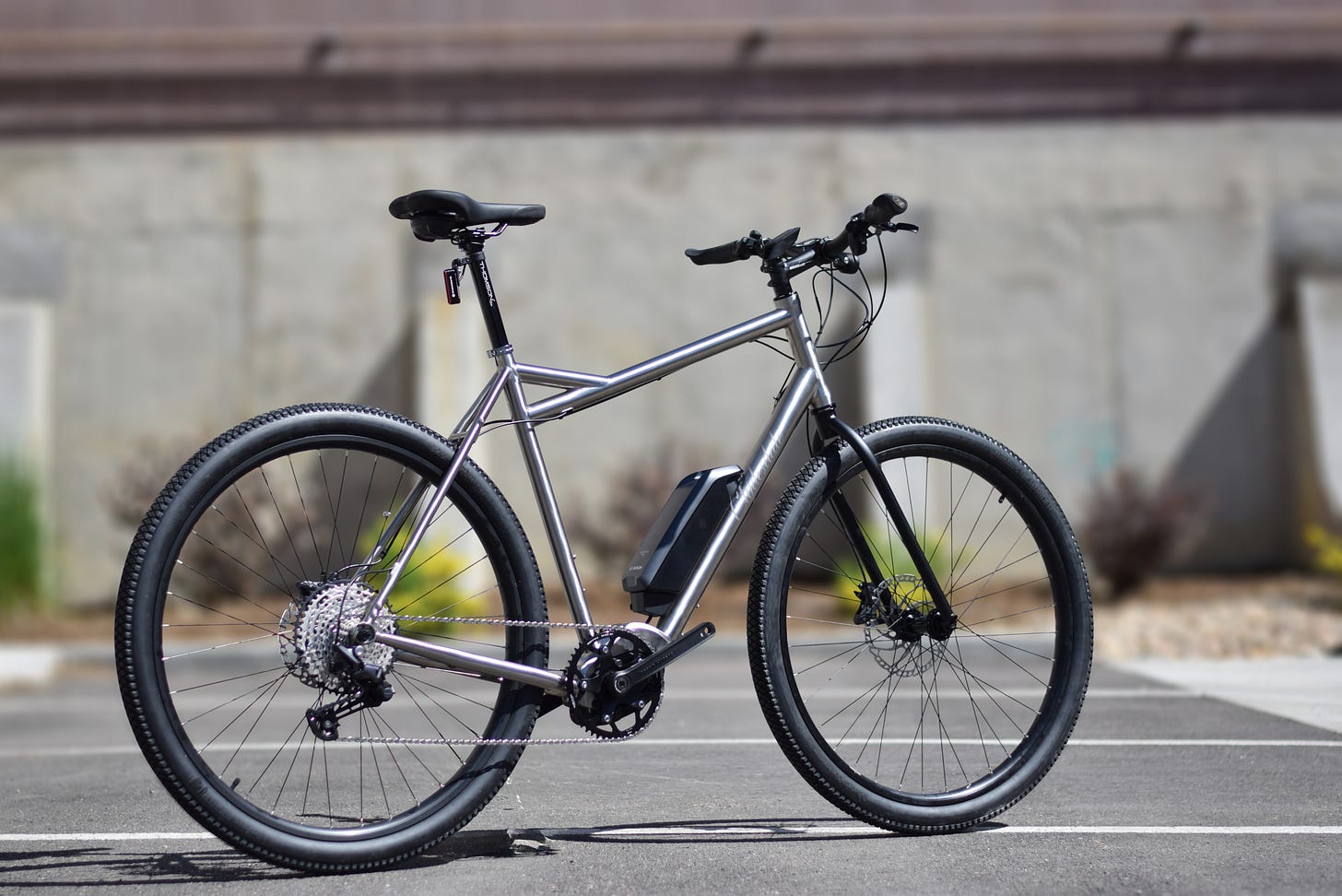Choosing Between 32”, 36”, 750D, and Other Wheel Sizes
Response from Zipp to last week's column
Dear Lennard,
I have a question for your technical column: 32” or 36” wheels?
I’m 6’4”, 56, recreational rider, gravel and cruising around town.
I’m enamored by the “bigger is better” idea of 36ers that might not need any suspension and could go anywhere or do anything. But I’ve heard they are hard to get started. Any thoughts?
Scott
Dear Scott,
Having built frames and complete bikes for every wheel sizes from 16” to 36”, I love this question and have lots of first-hand experience to share with you. You may know that most of my bike customers are your height or taller, and scaling the tire size to the rider fits with my philosophy of making as many parts of the bike properly fit to the rider as I can—from frame, fork, wheel and tire size, to crank length, handlebar width, and saddle width.
First, let me precisely quantify these wheel sizes and how they differ from standard wheel sizes. BSD is the bead seat diameter—the diameter of the shelf the tire bead sits on inside the rim.
· BSD of a 36” wheel is 787mm
· BSD of a 32” wheel is 686mm (101mm—or 4”—smaller than 36”)
· BSD of a 750D (gravel) wheel is 660mm (26mm—or 1”—smaller than 32”)
· BSD of a 700C/29” wheel is 622mm (38mm—or 1.5”—smaller than 750D)
· BSD of a 650B/27.5” wheel is 584mm (38mm—or 1.5”—smaller than 750D)
· BSD of a 26” MTB wheel is 559mm (25mm—or 1”—smaller than 650B/27.5”)
Here is a 700C bike and a 32er, both for a 6’7” rider. The 32” wheels are 2.5” taller and make the bike look more in proportion.
Yes, 36er wheels have so much rotational inertia that they are indeed hard to get started rolling. This is also generally true with 32” wheels. Because of their enormous wheel and tire weight, for somebody your height, I consider a 36er to be a bike you would have for its gee-whiz factor and for your “cruising around town,” but not for accompanying your riding buddies on gravel or road rides of any distance and vertical gain. With the currently available rims and tires, I see 32ers in a similar light.
That said, we have made lots of titanium 32er e-bikes with Bosch mid motors, and those are a giggle fest to ride. The concern about how much power it takes to get them up to speed goes away with the powerful Bosch motor, and then you just get the feeling that nothing can knock you over thanks to the enormous rotational inertia of those huge wheels. Climbing, cornering, and braking traction are amazing even without knobs, there is great joy in rolling over 29” holes without falling in, and you can carry speed through rough terrain better than with smaller wheels. Here’s a 32er e-bike for a 6’8” rider; as you can see, without anything in the frame for reference, it looks like a medium-sized bike, not a 70cm one!
32” and 36” wheels are super heavy not only because of their size but also because of the purpose for which the Nimbus rims and tires most often found on 32ers and 36ers are made, namely unicycles. Their beefiness allows daring unicycle riders to jump off high ledges, landing with their full weight and no suspension on a single wheel without crushing the wheel. To survive this kind of hucking, Unicycle.com’s Nimbus Dominator2 Rim weighs a hefty 1173 grams in 36” and 1087 grams in 32”.
Keep reading with a 7-day free trial
Subscribe to Technical Q&A with Lennard Zinn to keep reading this post and get 7 days of free access to the full post archives.







